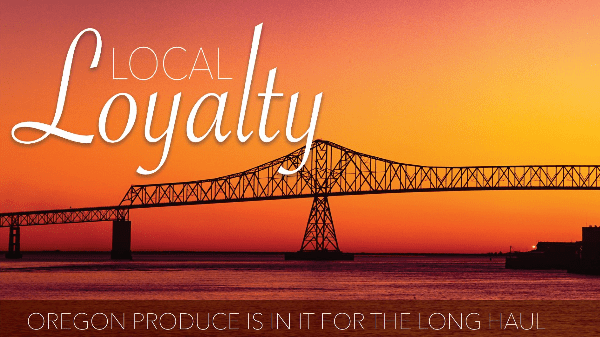Although the Oregon produce industry as a whole faces everyday hurdles, perhaps the greatest concern is the annual cost of running a business—whether from labor, equipment, new regulations, tariffs, or fees.
Botsford & Goodfellow, Inc., BB #:100733 a brokerage headquartered in Portland, feels the pinch with deliveries.
“We’re nickel-and-dimed every time we make a delivery—if it’s five minutes late or if the purchase order number or the manifest changes at all,” laments salesman Jason Comella.
Logistics, he notes, is an ever-evolving space: “There are no more one-day variances. If a truck breaks down or is stuck in the snow, it’s an automatic fine,” he says. “It’s concerning and comes out of the pocket of the farmer.”
Anne Marie Moss, communications director for the Oregon Farm Bureau, agrees.
“Most farmers are cost-takers, meaning they cannot adjust the price of their product to reflect the true cost of doing business,” she explains.
In response, the Farm Bureau hopes to lessen the burden and workforce pressures by ensuring farms “are not subject to new tax burdens or increased production costs.”
In the past few years, chain stores have implemented mandatory social audits which, while important, take time and also eat into the bottom line.
These audits, according to another Botsford & Goodfellow salesman Chris McNamee, “Encompass everything from wages to days off per week; they dissect everything regarding the farms’ business practices.”
Lack of labor and the rising minimum wage are also being felt.
The minimum wage in Oregon is $11.25 an hour, but it will rise to $12 July 1. In the Portland metro area, the minimum wage is $1.25 higher than the standard minimum.
“Finding drivers and night crew are a challenge,” says Sam Caruso, president of Caruso Produce, Inc., BB #:100737 also based in Portland. “Wages are increasing, and employee reliability is decreasing; it’s difficult to field a team. Therefore, we try to take care of those who show up for work and do a good job.”
Botsford & Goodfellow’s Paul Kern sums it all up this way: “Higher wages, mandatory retail audits, and extensive food safety programs all have their part in increasing the cost of our goods. While consumers are generally loyal to local or domestic product, there’s a tipping point on how much extra they’re willing to pay for it. In not knowing what the future holds, there’s been a tremendous surge to automate production wherever possible.”
This is multi-part feature adapted from the Oregon spotlight in the January/February 2020 issue of Produce Blueprints.



